Sidelined: Bias in So-Cal schools and youth sports?
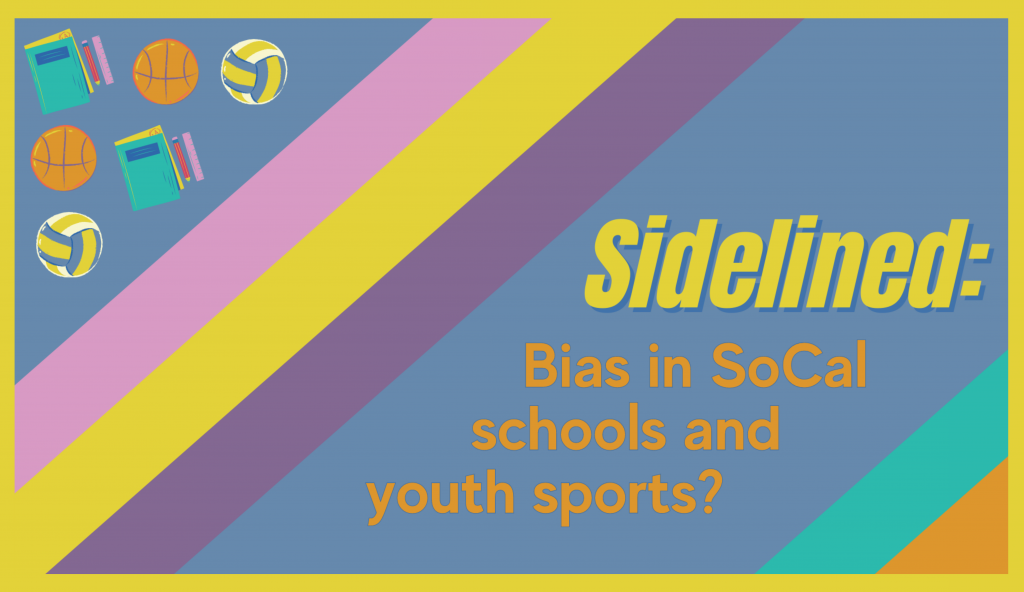
Southern Californians share experiences of discrimination in educational settings
By Asha Johnson and Xennia Hamilton
Education is considered the great equalizer but what happens when students face inequality while trying to learn?
“Until we get equality in education, we won’t have an equal society,” Justice Sonia Sotomayor has said.
As Sotomayor indicates, inequities and discrimination in education have broader societal impacts.
Cal State LA’s Race, Class & Gender in American Journalism class created a podcast to explore stories of folks who grappled with racism, sexism, classism, nepotism and other forms of bias or discrimination in educational settings, including schools and athletic programs.
The 10 episodes produced cover a range of obstacles and biases. Examples include:
- Johanna Avalos, Rachael Illescas, and Sasha Rafael describe how they were overlooked or treated differently because of their gender either by a teacher or coach.
- Carey Poindexter, Robert Gonzales, and Anjalene Frank described the racism they faced while trying to learn and how it made them feel at the time.
- Others interviewed described classism, ableism, and other forms of bias they faced.
In light of the curriculum introduced to implement critical race theory into curricula at all educational levels and college admission scandals, there has been more attention to concerns of racism, nepotism, and classism in academic settings. But educators and students say more must be done. To that end, the project also looks forward, to examining models that have worked in other states and strategies for eliminating personal and institutional biases that can affect students, student-athletes and others.
When she was in high school in La Verne, Anjalene Frank said in an interview that she was called the n-word repeatedly by another student in high school and she will never forget how he how he got a slap on the wrist while another student was suspended for calling someone a prostitute.
The disparate treatment was unsettling and has stayed with her.
Similarly, Carey Poindexter, an MBA student, recalled the time an employee at his high school followed him around because of what he was wearing but he pointed out that another student nearby was wearing similar attire: “The only difference was that he was white and I am Black. They didn’t follow him but they had people following me…It left a bad taste in my mouth.”
Experts say that biases acted upon by educators, counselors and other school staff, whether intentional or unconscious, can contribute to educational achievement gaps for students of color.
“I have absolutely seen children discriminated against…I think what leads teachers and coaches to discriminate many times, unfortunately, is unconscious systemic racism,” said Jeannie Flier, a visual arts teacher in the LAUSD system.
Studies have found that Black male students have less access to resources and coursework that can prepare them for college and they’re more likely than other racial groups to “face excessive disciplinary action and overrepresentation in special education, which can cause them to lack self-confidence and perform poorly in school.
The impact is far-reaching.
Only about one in five African American men graduate college in four years compared to more than two in five of their white peers, according to 2018 U.S. Department of Education report.
“A lack of achievement often categorizes African American males as at risk in educational systems and pathologizes them as unmotivated learners,” according to an article on critical race theory in the January 2021 issue of the Professional School Counseling journal. “Eventually, academic disenfranchisement leads to limited career and social opportunities, resulting in a poor quality of life for African American males.”
Disparate treatment and opportunities can be detrimental to the lives of students. In many instances, the difference between success and failure is determined by which courses and other opportunities you are recommended for.
“Bias wears away at the self-esteem and confidence of students,” Flier said. “How severely it does that I believe depends on what else has happened in the lives of the students…Isolated situations of bias peppered into a generally privileged life is one thing. But ongoing historical, daily racist micro-aggressions and worse, coming from not only real life, but also media and society can be devastating.”
There is a lot of research showing that students who visit school counselors – and have enough of them at their school to make regular appointments – are more likely to apply to college.
Ironically, there are also some studies indicating Latinx students can have negative experiences seeing a counselor, especially those with unconscious biases.
“School counselors may neglect the needs of Latinx/a/o students, [or] counsel them away from college-preparatory courses, or provide insufficient or misinformation about attending college,” according to a January 2021 article in the Professional School Counseling journal. “Latinx/a/o students have reported that school counselors were unavailable to guide them, that counseling lacked individualization, and that they experienced low expectations for achievement…In one study, Latino students described how school counselors discouraged them from pursuing college through within-high-school tracking and racial microaggressions [and] in a separate study, Latino students recounted how counselors tracked them toward less selective institutions despite clear academic qualifications and eligibility for financial assistance.”
It’s similar for Black female students.Findings from a study about school counselors published in October 2019 in the B.E. Journal of Economic Analysis and Policy showed that “a black girl in the strongest academic and behavioral profile is equally as likely to be recommended [for Advanced Placement courses] as someone blindly reviewed in the weakest academic and behavioral profile and is rated as being least academically prepared.”
Experts say that discrimination against student athletes is extremely common, as evidenced by pay gaps in college sports.
“Racism is an ever-present bias throughout the sports world,” said Leonard A. Jones, who has a degree in psychology and a master’s in Coaching and Athletic Administration.
Part of the problem stems from a lack of diversity in leadership.
For instance, most Division 1 college basketball players are Black while only about 1 in 5 head coaches are Black, said Jones, who is the associate head basketball coach at Lincoln University in Oakland, California.
An underrepresentation of black leaders and mentors can lead student athletes to be sidelined for prime positions, playing time, and other opportunities, he added.
A study done by Harvard Business School showed that basketball coaches are likely to favor players of their own race over other races.
Players and teams that come from affluent areas tend to get better facilities, training, and coaching and when they play home games, they are well aware of their affluence and status – sometimes caught on video making classist comments or chants such as, “You’ll work for us one day” or ‘We’ll own you.”
Coming from a low-income neighborhood, Isaiah Ajiboye recalls how hard it was for him to gain the coach’s trust.
“I was just a kid…from Inglewood or from a poor background, so I didn’t really get as much attention,” Ajiboye said. “At that time…I didn’t understand the definition of entitlement.”
Some former student-athletes interviewed pointed to the issue of coaches giving their own kids and their kids’ friends more opportunities on the playing field over others who may be just as or better qualified.
“Nepotism is ingrained into the fabric of sports, whether it be a men’s or a women’s sport. The term ‘coach’s kid’ is prevalent throughout the sports landscape period. What is perceived with ‘coach’s kids’ or ‘sports families’ is that the younger kids get involved in their prospective sports, the better they will be as they grow into their sports, whether it be going to practice daily with their parents, or following their older siblings into the same sports that they participate in,” Jones said.
Women and LGBTQ students face similar biases in sports.
They have reported feeling held to different standards.
Rachel Illescas recalls her time playing soccer on a mixed-gender team: “Because of my gender — just because I was a girl — they weren’t going to accept me.”
Jones said sexism is prevalent in youth sports “especially for women trying to enter the male-dominated sports”: It is only recently within the last 10-15 years that a few ‘exceptional’ women have been given the opportunity to participate in male sports.”
Examples include Mixed Martial Arts fighters Amanda Nunez and Rhonda Rousey, some of the female faces of the Ultimate Fighting Championship.
Women must be leagues beyond their male peers in order to be accepted and become successful in sports that are dominated by men, Jones added. Similarly, people with disabilities “must be highly exceptional (much more than average) to get a chance to compete on the same teams as able-bodied players,” Jones said.
Heterosexism and homophobia are common forms of discrimination faced by students who are on a school sports team.
A 2014 NCAA report cited a study of five Division I campuses and how their sports teams responded to diversity, including race, gender, class, geography and sexual orientation and found: “Questions about sexual orientation brought about the most highly charged responses.”
“Many also denied that LGBT individuals were members of their teams or expressed negative reactions to the idea of having LGBT team members. The overall message from the findings was that hostility toward gay men and lesbians exists on nearly all teams,” according to the report.
Offering solutions
Solutions being implemented nationwide to combat biases and discrimination in educational settings include incorporating critical race theory into curriculum to ensure students learn about how pivotal issues such as slavery and the exploitation of indigenous people and immigrants were to the growth of the United States as we know it.
Educators can racism and bias in schools and youth sports must be tackled in a comprehensive way.
“There is no magic bullet to remedy bias and discrimination in schools. It need to be an ongoing systemic approach to dismantling, distorted, and bigoted views and practices,” Flier said. “It is ongoing training, discussions and procedural change in schools and institutions. Otherwise, old habits like bad apples will ruin the effort.”
Some of the solutions suggested by educators, students and others interviewed include:
Diversity in hiring when it comes to educational settings can help. Teachers who have experienced bias themselves can more easily identify it and pass on strategies to empower their students.
Flier, the middle school teacher, said she was passed over for a promotion at a private school and it seemed it was because she is a woman.
“I worked for a private school. They hired a new English teacher who literally had two years of teaching experience as opposed to my nine years of experience,” she said. “I found out he was getting paid $1,500 more than me. This was 25 years ago. That was a lot of money. But we were not equal. I had more experience. That was when I went to teach at LAUSD.”
Her personal understanding of injustice helps her empower students facing similar obstacles.
Educators and coaches can undergo training programs to help them recognize bias and how to eliminate it when they see it.
A 2019 report by Harvard Business Review found positive impacts from a diversity training it conducted as part of its study and although the training was about gender equality, it also positively affected the participants’ attitudes towards racial minorities. That said, the results also showed that behaviors were not impacted as much, so the publication’s authors recommend experimenting to find the right types of diversity training and approaches.
When people get to know each other well as individuals, their unconscious biases don’t come into play as much.
Rather than giving into implicit biases, educators could push themselves to feel empathy for every student.
“One solution [is] learning about the lives of students and showing that you care. At least one study has found that actively trying to take the perspective of another person — as opposed to trying to be ‘objective’ — increased one’s ability to not fall prey to stereotypical views of others,” according to a 2016 article in Great Good Magazine, published by UC Berkeley’s Greater Good Science Center.
Coaches can do the same, said Ajiboye, the basketball player.
“Be open-minded…because some of these kids come from terrible backgrounds and their mental [health] is not all that good and what you’re doing to them could be hurting them,” he said. “Know that these kids look up to you.”
Ajiboye’s advice is to find a trusted advisor to talk about the issue with and to avoid letting smaller obstacles get in the way of achieving their broader goals: “You’re going to go through these things but know that there’s a bigger picture.”
That said, if it seems like the issue should be addressed, figure out the best way to raise the issue and work to “make a change.”
For instance, students can file complaints within their institutions. Title VI of the Civil Rights Act and Title IX of the Education Amendments of 1972 prohibit discrimination based on race, color or national origin, and sex, including sexual orientation and gender identity, respectively. The Americans with Disabilities Act has similar protections.
If that still doesn’t work, students can take more drastic measures.
“There’s nothing wrong with transferring” to a different school or program, he said.
That’s exactly what Kathryn Villavicencio did for her son with a learning disability: She transferred him to another school in their hometown of Montebello and she said the switch was transformative.
“One school threw my son away like he was nothing, not even a human being,” she said. “Another school found my son to be a genius, and to be appreciated and celebrated.”
Podcast episodes

Sasha Rafael
By Priscilla Caballero, Citlalli Prado & Michelle Leon
Sasha Rafael, a microbiology major, sometimes felt judged and underestimated because of the way she dressed or looked, and for simply being a woman in STEM. This is her story.
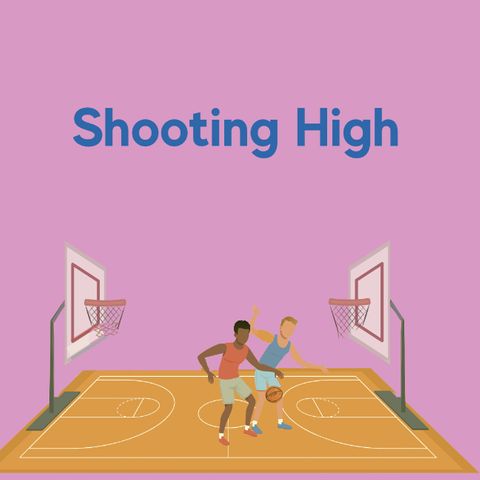
Isaiah Ajiboye
By Braylin Collins
Late last year, Isaiah Ajiboye was about to sign a contract to play basketball professionally overseas in Dubai. But it wasn’t always smooth sailing when it came to athletics. He recalled moments in high school when he almost quit the sport for good.
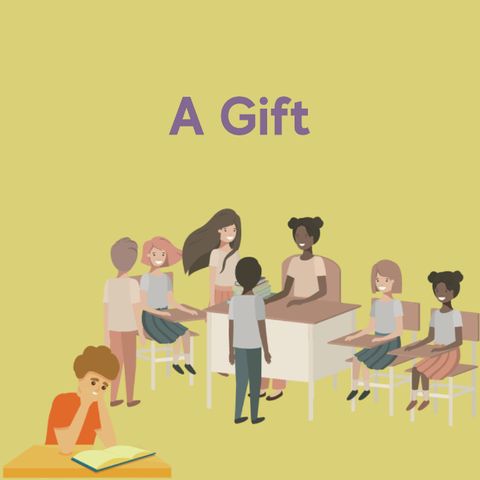
Kathryn Villavicencio
Kathryn Villavicencio’s son had a learning disability that was undiagnosed for years. Making things worse was the poor treatment he received at school in Montebello.

Anjalene Frank
By Vincent Moc
When Anjalene Frank, a Black student, was called a racist term at her high school, she alleged that the school didn’t react the way it did when a white student was called a sexist word.

Christopher Lindo
Christopher Lindo recalled how excited he was about the first day of class. But he sensed his enthusiasm may have rubbed the teacher the wrong way, which affected how engaged he was in the class.

Rachel Illescas
By Eileen Osuna
Christopher Lindo recalled how excited he was about the first day of class. But he sensed his enthusiasm may have rubbed the teacher the wrong way, which affected how engaged he was in the class.
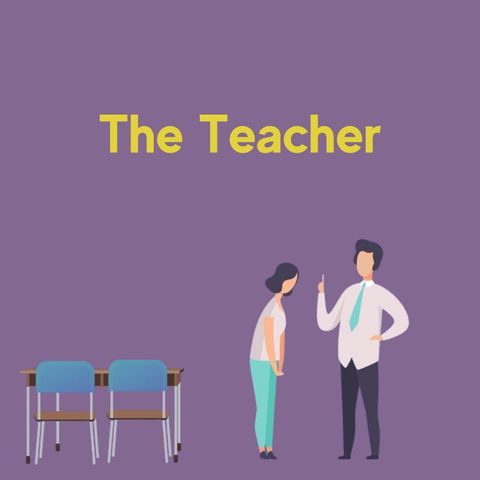
Eileen McClure
Eileen McClure, a now-retired teacher, recalled applying for jobs that men ultimately got and other alleged sexism she faced in an educational setting.
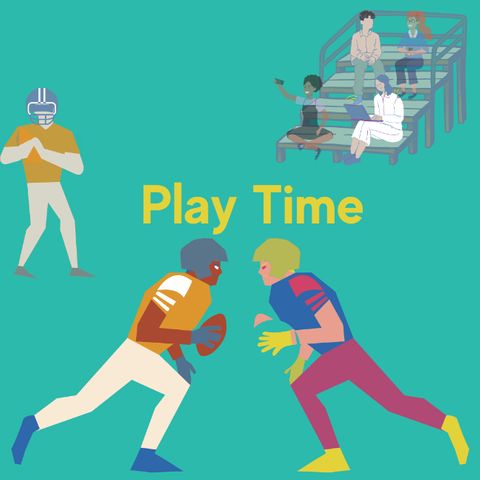
Robert Gonzalez
Robert Gonzalez, a medical school student, was a child in East Los Angeles when his football program coaches seemed to favor players they knew better.
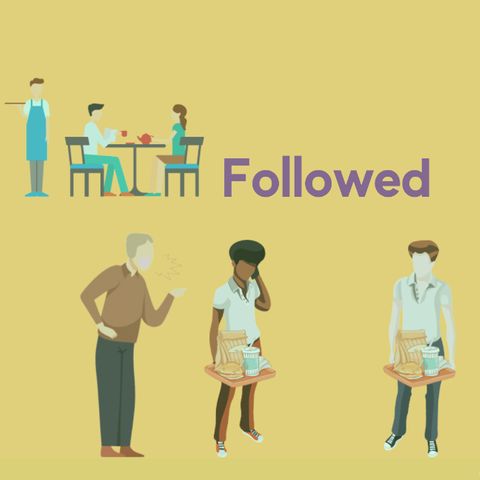
Carey Poindexter
Carey Poindexter, a fourth-year architecture student, said that when he was in high school, he was allegedly targeted and followed around by a school employee because he is Black, which taught him the reality of being a Black man in America.
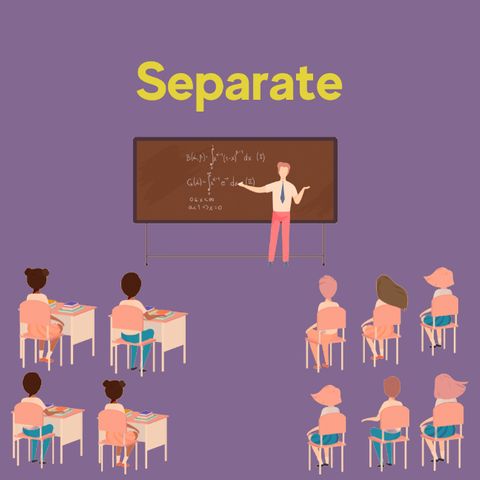
Alexis Hernandez
By Brian Perez
Alexis Hernandez alleged that a teacher in high school oddly put students of color in one area of the classroom and white classmates on another.
Credit
This project was produced by students in Cal State LA’s JOUR 3500 Race, Class & Gender in American Journalism class in collaboration with Golden Eagle Radio.
GER Station Manager: Ronald Cruz
Professor: Julie Patel Liss
Developer: Vraj Mehalana
Illustrators : Priscilla Caballero, Citlalli Prado and Michelle Leon
Reporters : Angelica Aguiniga, Priscilla Caballero, Erick Cabrera, Braylin Collins, Gerardo De Los Santos, Victoria Ivie, Imari Jackson, Michelle Leon, Vincent Moc, Eileen Osuna, Brian Perez, Citlalli Prado & Stephanie Sical
A special thanks to GER’s Carlos Estebes, Heidi Itzep-Poroj, Marianne Arambulo, and business manager Albert Ramirez.